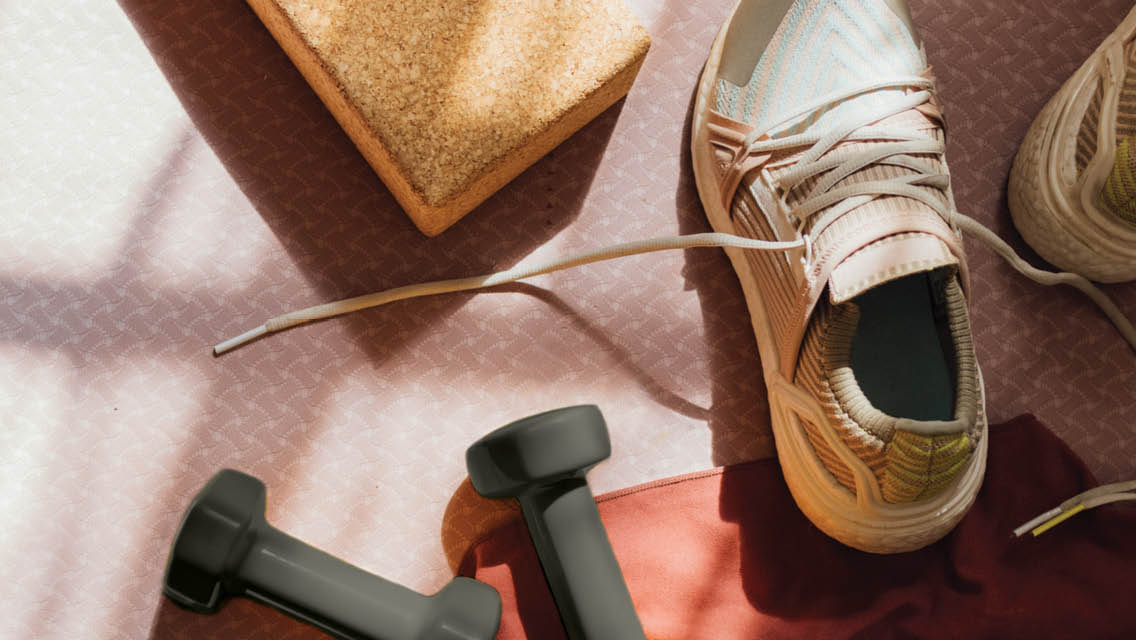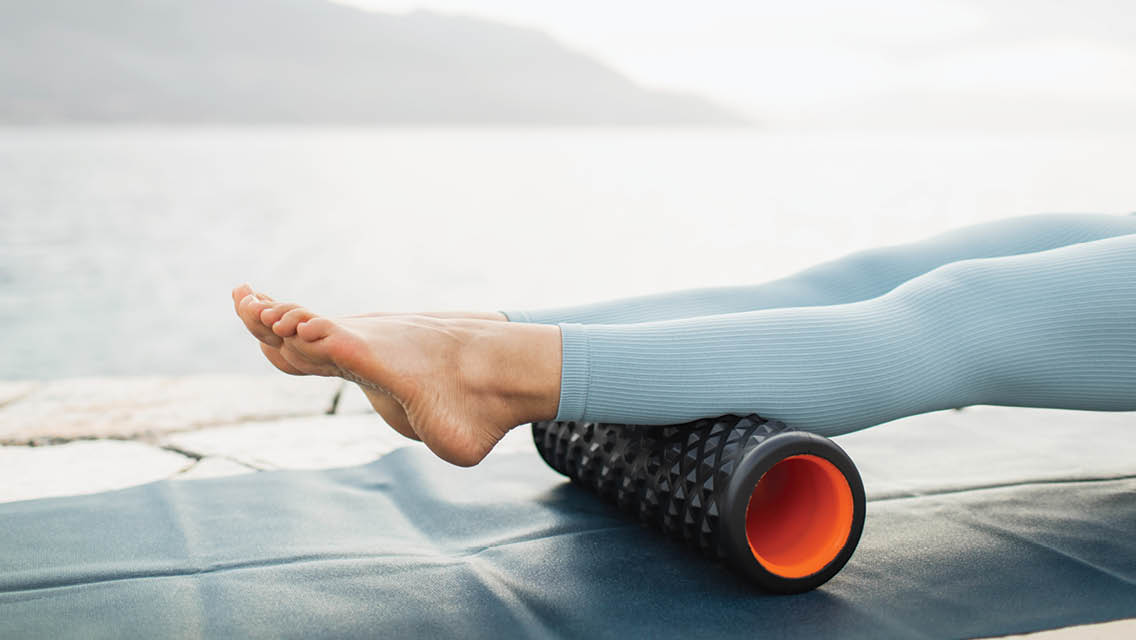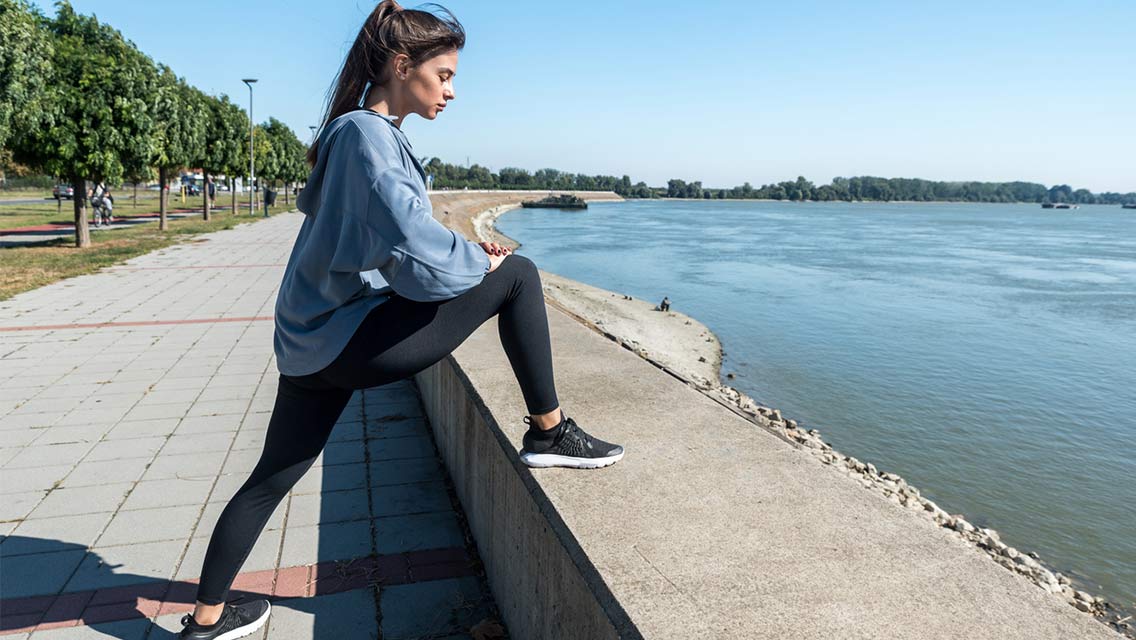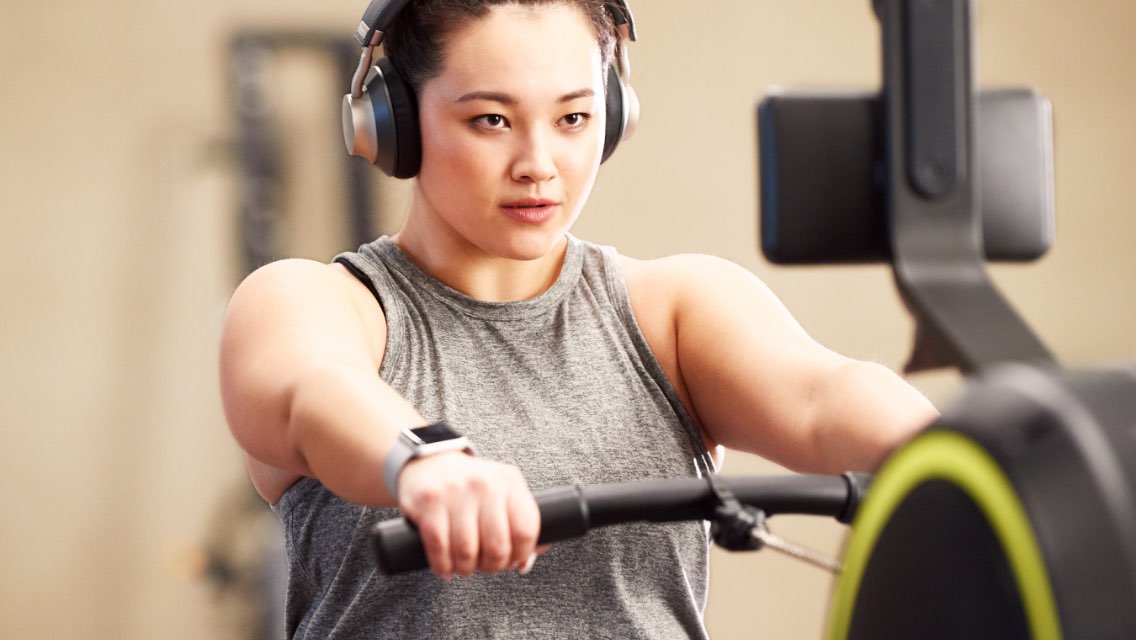Explore this article:
Morning vs. Evening Workouts • Running vs. Walking • Fasted vs. Fed Training • Squats vs. Hip Thrusts • Standing Abs vs. Floor Abs • Yoga vs. Pilates
Should I work out in the morning or evening? Should I run or walk? Should I do squats or hip thrusts?
These smaller queries all lead up to the Big Question: What is the best workout?
The answer is frustratingly simple: There isn’t one.
“Exercises should be considered in the context of the person who is doing them, as there are numerous ways to move toward a goal,” says Life Time master trainer and nutrition coach Joe Meier, CSCS, PN2. “Comparing exercises and saying one is right or wrong usually does more harm than good.”
That context includes your current fitness level, past exercise experience, short- and long-term fitness goals, abilities and disabilities, and personal movement preferences, not to mention other facets of your life, which is full of responsibilities, priorities, and stressors. These factors are uniquely combined for each person — and, notably, will show up in various ways over the course of a person’s lifetime.
“It’s unrealistic to assume that, with a world population of more than 8 billion people, we are all meant to do the same thing, and have the same results, when it comes to fitness,” says personal trainer Jacque Crockford, ACE, DHSc.
What’s best for one person might not be best for someone else. And what’s best for you today might not be what’s best for you next year, or even tomorrow.
With all this in mind, we asked experts to weigh in on some of the exercises, workouts, and fitness concepts that are most often pitted against each other. The resounding answer is that we, collectively, need to move past the mindset of either-or.
Morning vs. Evening Workouts
“The most important thing in terms of scheduling your workouts is a consistent schedule,” says Alec Blenis, CSCS, CES, PN2, a strength and endurance coach and ultraendurance hybrid athlete. This enables your body to anticipate the effort and get into a rhythm and mindset of OK, it’s time to exercise now or It’s time to cool down and relax.
Keeping a relatively consistent schedule for exercise, meals, and sleep is a key component of fitness success. The more consistent you are, the more your circadian rhythms stay steady, enabling you to get into a flow state and tap into necessary energy when you need it — and to relax when you need to, as well. (See “The Connection Between Circadian Rhythms and Overall Health” to learn how these rhythms affect your health — and how you can better attune to them.)
Research has shown that morning and evening workouts both offer amazing benefits. According to a recent study published in Frontiers in Physiology, morning exercise reduces abdominal fat and blood pressure in women; evening exercise increases muscular performance in women and lowers blood pressure in men.
The key is finding the schedule that works and feels good for you, Blenis says. Workout times must account for any personal factors influencing exercise — so it’s easier to stick with your schedule without worrying about work meetings or dropping off kids at daycare.
“Everyone’s schedule in life is so different and everyone has different priorities,” says Blenis. “I encourage people to have consistency because it helps with habit formation and making workouts more enjoyable.”
But remember, the timing doesn’t have to be perfect. “Getting your workout done is better than skipping it just because you couldn’t do it at your preferred time,” he adds.
Running vs. Walking
Running is often considered the ultimate exercise — it gets your legs moving and your heart pumping, and it calms your mind. There’s a reason that the feeling of aerobic exercise–induced euphoria is called the runner’s high.
Walking, too, is a fitness darling. Research highlights its numerous benefits: boosting immunity, releasing endorphins, and reducing high blood pressure and cholesterol. Plus, it’s a great way to stay mobile.
“As we age, being able to get around via walking is arguably the most important functional capacity one should try to maintain, making walking consistently throughout the lifespan a great addition to a healthy lifestyle,” Meier says. (Learn more about the health benefits of walking at “The Powerful Health Benefits of Walking.”)
Despite each boasting many benefits, these activities are often pitted against each other because of how much impact they have on joints, with the understanding that walking has less than running.
But less impact doesn’t mean zero impact, Blenis warns.
“Walking has different types of impact [than running],” he says. “The stride is different, and the cadence is different. There’s impact from both running and walking, so I don’t think one’s necessarily better than the other as far as impact is concerned, provided you’ve gradually increased your tolerance for it.”
With walking, it’s possible for most people to increase volume while avoiding injuries to the knees, feet, and ankles. That’s not to say there’s no risk — walking too much, too fast can result in soreness and issues like shin splints and plantar fasciitis — but the risk is typically lower than with running. Running can be trickier to manage in terms of how quickly you ramp up your distance and intensity.
Just keep in mind that “while running does come with a bit more injury risk, less impact doesn’t make an activity better outright — impact stimulates important fitness adaptations too,” Blenis says. “Everyone should be mindful of doing an appropriate amount of impact for their bodies.”
If you increase your mileage slowly and invest in recovery time, either activity can be a great way to get outdoors, socialize, and train the cardiovascular system. “From a general health perspective and a weight-loss perspective, both running and walking can be fantastic,” explains Blenis.
(For a beginner-friendly 5K program, check out “How to Train for Your First 5K.”)
Fasted vs. Fed Training
“Fasted training” refers to working out after you have stopped processing and breaking down food, forcing your body to use stored fat as a fuel source. People often do fasted training in the morning before breakfast or six to eight hours or more after a meal.
But working out on an empty stomach doesn’t suit everyone. “There is insufficient data proving that fasted training leads to better fat loss over time, which is one of its common claims,” says Meier, a certified nutrition coach. “Choosing between fasted versus fed training simply comes down to an individual’s preferences and goals.”
“There is insufficient data proving that fasted training leads to better fat loss over time, which is one of its common claims.”
Some data shows that longer-duration workouts benefit from fed training, but shorter-duration workout performance can be similar whether fed or fasted, experts say. However, during a shorter fasted workout, the type of fast and certain medical conditions could lead to side effects, like dizziness, low blood sugar, or lightheadedness.
Work with your coach and a trusted medical professional to determine if fasted workouts are right for you. Meier notes that if your energy is sustained throughout your planned workout, you’re on the right track.
Most individuals who choose to eat before training should consume easily digested foods that are high in carbs and protein and low in fat and fiber. (For preworkout snack ideas, visit “12 Quick Preworkout and Postworkout Snacks.“)
And remember: Whether you prefer fed or fasted training, staying hydrated is essential. (Learn more about what to drink and when at “Everything You Need to Know About Hydration.”)
Squats vs. Hip Thrusts
Your glute muscles are the foundation for almost every activity, whether it’s leaping for a pickleball shot, hiking to a summit, or simply bending to tie your shoes. “Strong glutes are especially important if you play explosive sports or lift heavy weights,” strength coach and biomechanics researcher Bret Contreras, PhD, CSCS, has said. “They’ll help you sprint faster, jump higher, and twist more explosively — and they’ll also help prevent injury.”
Larger, well-defined butts are trendy in fitness circles and beyond. With this convergence of function and fashion, it’s no wonder many people seek advice on building a strong rear end — only to find that opinion is divided into two vocal camps: Team Squats and Team Hip Thrusts.
Squats are a full lower-body exercise targeting the glutes, adductors, and quads. Hip thrusts hit the glutes without putting as much load on the quads and adductors.
But there’s no reason to choose. Both movements have their place in a progressive strength-training plan.
Blenis says squats improve overall lower-body strength as well as mobility; hip thrusts target the glutes in a shortened position, so they’re important for sprinting and jumping.
Both can help manage recovery, he notes: Training a muscle in its fully lengthened position (e.g., squatting) tends to produce more soreness, while training a muscle in a shortened position (via hip thrusts) tends to result in less soreness.
“We want our muscles to be strong throughout their full range,” Blenis says. “Squats and hip thrusts are complementary to one another.”
(For a glute workout designed by Contreras, visit “Build a Strong Butt“. Progress your glute routine with the eight-week program at “The 8-Week Glute-and-Hamstring Workout.”)
Standing Abs vs. Floor Abs
For years, supine exercises — like crunches and sit-ups — were considered the optimal way to train abs. Then came a rise in popularity of prone moves like planks and mountain climbers, which were considered more functional and less likely to cause neck or back pain. Now, the trend is standing abs routines, which include standing crunches, wood chops, and marching in place.
Proponents of core exercises that require you to get on the floor explain that floor workouts are more stable and more likely to be performed correctly, due to the support of the ground beneath you. They leverage gravity and the weight of a person’s trunk to challenge and improve strength. Floor-based exercises are especially good for people with mobility limitations or balance issues, like vertigo.
Standing abs aficionados, such as functional-movement specialist Gary Gray, PT, FAFS, note that most daily activities requiring core activation happen on two feet. Moreover, reaping benefits from floor-based core work is dependent on maintaining perfect form and muscle activation, which can be a tall order.
Standing abs are ideal if you experience joint issues, such as neck, lower-back, and wrist pain, while doing floor exercises, says Crockford. They’re great for small spaces, building proprioception and balance, and training power. And they can be safe for prenatal workouts and for people recovering from injuries.
Crockford notes that it’s important to not think of standing abs as easy and floor-based core as advanced. Either can be modified to suit your fitness level, so choose one — or a combination of both.
(New to standing abs? Find a six-move functional routine from Gray at “The Standing Ab Workout.”)
Yoga vs. Pilates
Yoga and Pilates are often conflated or considered two sides of the same coin, yet they are quite different. Yoga is an ancient, multipronged spiritual practice that includes physical elements but was not meant to be a form of physical exercise. Pilates, on the other hand, was developed in the 20th century as a mode of rehabilitation focused on core stability, efficiency of movement, postural alignment, and balance.
But they do have things in common. Yoga and Pilates are both practices that foster the mind–body connection, building psychosomatic awareness while simultaneously challenging the physical body, explains Pilates instructor Sonja R. Price Herbert, a social worker, author, activist, and founder of Black Girl Pilates.
Moreover, “if you look at the asanas of yoga and you look at the exercises of Pilates, some of them look similar,” says Herbert. For example, the boat pose in yoga looks like the teaser in Pilates — both require strength, balance, coordination, and focus — but the execution and purpose of each are different.
“Yoga is about finding yourself through movement, while Pilates is intended to be a workout first.”
“Yoga is about finding yourself through movement, while Pilates is intended to be a workout first,” says Herbert. “Is Pilates challenging your body and your strength, and is it challenging your mind? Absolutely. But it’s different from what yoga [was created to do].”
In today’s fitness landscape, where mind–body practices are lauded on their own and combined into new methodologies (yogalates, anyone?), yoga and Pilates can be complementary. Both practices have been shown to increase bone density, and both offer tremendous benefits for healing while challenging practitioners to focus on the mind–body connection, experts say.
It’s OK if one makes you feel better, or you simply just love one more than the other one. You can’t go wrong with either. And if you can’t choose just one, you can always incorporate both into your life.
This article originally appeared as “The Best Workout?” in the January/February 2024 issue of Experience Life.





This Post Has One Comment
Good article!